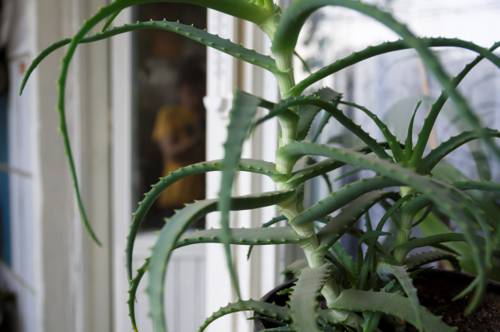
FAQ About Indoor Plant Ethylene Sensitivity

What is ethylene and how does it affect indoor plants?
Ethylene is a naturally occurring plant hormone involved in regulating various aspects of plant growth and development, including ripening, flowering, and stress responses. In indoor plants, ethylene can influence growth patterns by promoting leaf abscission, fruit ripening, and flowering. Its effect can vary depending on the type of plant, the concentration of ethylene, and environmental conditions.

How can ethylene exposure affect indoor plants negatively?
While ethylene plays a vital role in plant processes, excessive exposure can lead to negative effects like premature leaf drop, wilting, and stunted growth. This is particularly true in small, enclosed indoor environments where ethylene levels can build up quickly if not properly ventilated.

Which indoor plants are most sensitive to ethylene?
Some indoor plants that are particularly sensitive to ethylene include philodendrons, ornamental figs, Boston ferns, and peace lilies. These plants might show signs of stress like leaf drop when exposed to elevated levels of ethylene.

How can I manage ethylene levels around my indoor plants?
To manage ethylene levels, ensure proper ventilation in your indoor space to dissipate the gas quickly. Avoid placing ripe fruits near ethylene-sensitive plants, as fruits release ethylene gas as they ripen. Regularly check for dead or decaying plant material, as decomposition can also release ethylene.

Do all fruits produce ethylene?
Not all fruits release ethylene. Some fruits, such as apples and bananas, are climacteric, meaning they produce and respond to ethylene as they ripen. Non-climacteric fruits, like strawberries and grapes, don't rely on ethylene for ripening and produce little to no ethylene.

Can ethylene production be beneficial for indoor plants?
Yes, ethylene can be beneficial as it aids in the ripening of fruits and the opening of flowers, enhancing the aesthetic appeal of indoor plants. It also helps plants cope with stress by regulating growth and encouraging recovery processes.

What are common sources of ethylene in indoor environments?
Common sources of ethylene in indoor environments include ripe fruits, cigarette smoke, and combustion gases from stoves or heaters. These sources can contribute to elevated ethylene levels, affecting sensitive plants.

How can I tell if my indoor plant is being affected by ethylene?
Signs that an indoor plant is being affected by ethylene include yellowing leaves, premature leaf drop, and stunted growth. Some plants might also exhibit unusual flowering patterns or rapid fruit ripening.

Is ethylene used commercially to manipulate plant growth?
Yes, ethylene is used commercially in agriculture to promote fruit ripening and flower opening. It can also be used to control the timing of these processes to meet market demands. However, such applications are carefully controlled to avoid undesirable effects.

How does ethylene compare to other plant hormones like auxins or gibberellins?
Ethylene differs from other plant hormones such as auxins and gibberellins in its gaseous form and its role in stress responses and fruit ripening. While auxins and gibberellins primarily promote growth and elongation, ethylene generally regulates processes that involve maturation and senescence.

What measures can be taken if indoor plants are showing signs of ethylene stress?
If your indoor plants show signs of ethylene stress, improve room ventilation, move the plants away from ethylene sources like fruit bowls, and remove any decaying material nearby. Adjust indoor temperatures if feasible, as warmer conditions can exacerbate ethylene production.

How does ethylene production change during the life cycle of a plant?
Ethylene production can vary throughout a plant's life cycle. It is often higher during stress conditions, fruit ripening, and leaf senescence. The increase is a way for the plant to regulate growth and prepare for environmental changes or developmental transitions.

Can ethylene sensitivity vary between different species of indoor plants?
Yes, ethylene sensitivity can vary widely between different species of indoor plants. Some species are more tolerant and may show no adverse effects under the same conditions that negatively impact more sensitive plants.

Are there any methods to artificially reduce ethylene sensitivity in plants?
Artificial methods to reduce ethylene sensitivity include the application of ethylene inhibitors like silver thiosulfate or aminoethoxyvinylglycine (AVG). These chemicals can block the effects of ethylene, thereby reducing symptoms like leaf drop in sensitive plants.

Are there home remedies to reduce ethylene exposure for indoor plants?
Home remedies to reduce ethylene exposure include enhancing room ventilation and using air purifiers equipped with activated carbon filters. Another simple remedy is to regularly remove overripe fruits and decaying organic matter from the vicinity of indoor plants.

How is ethylene detected in indoor environments?
Ethylene detection in indoor environments typically involves the use of specialized sensors or gas chromatography to quantify ethylene concentrations. Such professional tools are not commonly available for home use, but they are crucial in research and commercial applications.

Can changing the temperature affect ethylene's impact on indoor plants?
Yes, temperature can affect the production and impact of ethylene on indoor plants. Higher temperatures often accelerate ethylene production, while cooler temperatures might slow the effects. Adjusting the temperature can help manage ethylene levels and its impact on plants.

Why is ethylene considered both a hormone and a stress response agent for plants?
Ethylene is considered both a hormone and a stress response agent because it helps regulate natural growth cycles and developmental processes in plants, while also playing a key role in the plant's reaction to stress conditions such as drought, pathogen attack, and mechanical damage.

What role does ethylene play in the ripening of fruits on indoor plants?
In indoor plants, ethylene acts as a signal to trigger the ripening of fruits by promoting changes like color alteration, softening, and the conversion of starches to sugars, making the fruit more palatable and enticing for animals and humans.
